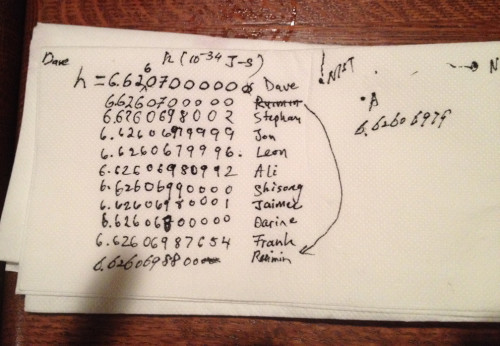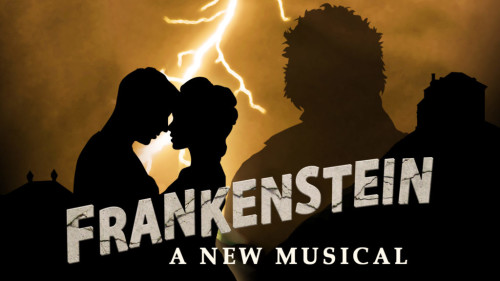
Fancy a flutter? The NIST napkin. (Courtesy: NIST)
By Hamish Johnston
A paper napkin with a load of numbers scrawled on top has been an unusual source of excitement for physicists at the US National Institute of Standards and Technology (NIST) in Gaithersburg, Maryland. One evening in December 2013, a group of them had gathered at a local watering hole to celebrate the success of NIST’s latest watt balance – NIST-3 – that had just determined Planck’s constant to a new accuracy. While enjoying “happy hour”, NIST researcher Dave Newell pulled out a napkin and the 10 researchers began to write down their predictions for the final value of Planck’s constant that NIST would submit to the International Bureau of Weights and Measures in Paris to help redefine the kilogram. The researchers then sealed the napkin in a plastic bottle and buried it inside a cavity within the foundation of NIST-3’s successor NIST-4, which was then being constructed.
Fast forward four years and NIST-4 has now made an even more accurate measurement of Planck’s constant that is now being compared to values at other national labs. So whose prediction came closest? The winner was Shisong Li from China’s National Institute of Metrology who guessed 6.62606990000 × 10–34 Js against the measured value of 6.626069934 × 10–34 Js. And what better way to celebrate than with a trip back to the local together with an “Italian rum cake” that had the submitted number written in icing. Tasty.
“Composer–writer–physicist” is how Eric Sirota describes himself and his latest musical, Frankenstein, will be opening on 9 October in New York City. Sirota did a PhD in physics at Harvard University and has published more than 90 research papers and has 20 patents to his name. He also studied music theory and composition at Brown University.

Monster show: the latest from physicist Eric Sirota. (Courtesy: Eric Sirota)
In an interview with the Dramatist, Sirota contrasts writing with physics: “I can’t compare it to rocket science, but I am a soft-condensed matter physicist, and writing a musical is much more difficult.”
Particle physicist and television personality Brian Cox has visited a “Mars analogue station” in the Utah desert to find out if humans could cope with living on the Red Planet. In this trailer, he suits up and goes into “full simulation mode” to visit scientists who spend weeks at a time practising to be settlers on Mars. There’s more about Cox’s visit in the BBC programme The 21st Century Race for Space.
Guidelines
Show/hide formatting guidelines
this text was deletedwhere people live in harmony with nature and animals</q>
Some text